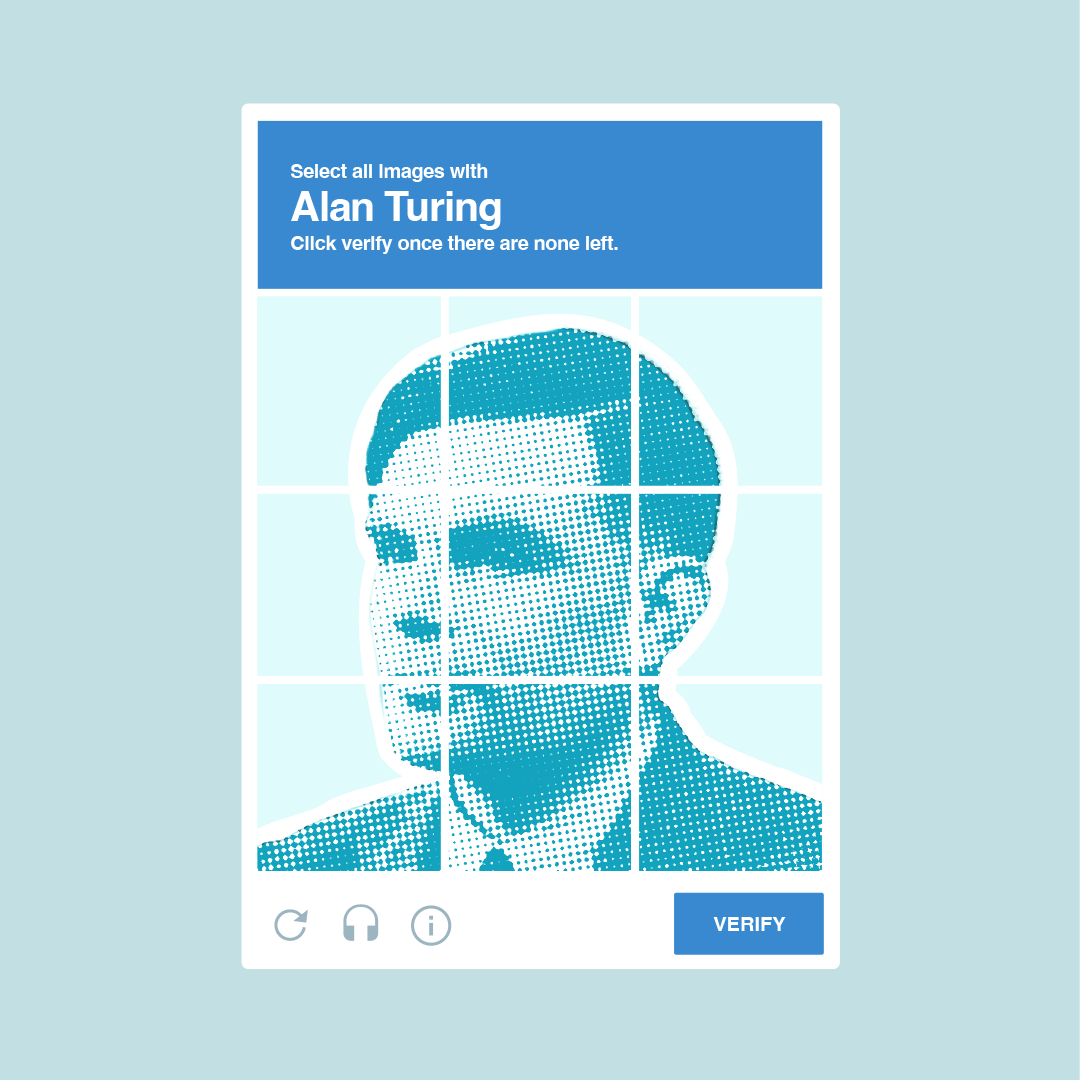CONFIRM YOUR HUMANITY
CONFIRM YOUR HUMANITY
I'M NOT A ROBOT
Have you ever thought it’s a bit strange that, while browsing the internet, a robot can pop up and ask us to prove that we’re human? Such is the irony of the now-familiar “I’m not a robot” CAPTCHA prompt. Becoming increasingly complex and commonplace, CAPTCHA tests are designed to distinguish human visitors from automated bots.
WHAT’S IN A NAME?
CAPTCHA stands for “Completely Automated Public Turing test to tell Computers and Humans Apart” (though pedants might note that the acronym should technically be C.A.P.T.T.T.C.H.A.). The concept is rooted in the Turing test, introduced by British mathematician and computer science pioneer Alan Turing in 1949. His test evaluates whether a machine can demonstrate intelligence indistinguishable from that of a human.
Bots can wreak havoc online, from spamming websites to launching cyberattacks. CAPTCHA was created to counter these threats. Initially developed in 2000 by Duolingo founder Luis von Ahn, CAPTCHA used distorted text that humans could decipher but machines struggled to process. These early tests cleverly served a dual purpose by harnessing human input to digitise text, aiding efforts to transcribe books and archival materials.
A later iteration, reCAPTCHA, revolutionised this concept by enlisting millions of internet users to transcribe difficult words from scanned texts. When users completed a reCAPTCHA, they helped decode words that OCR (Optical Character Recognition) systems couldn’t read due to poor quality or obscure fonts. This process contributed to the digitisation of millions of books, including those in projects like Google Books.
FROM BOOKS TO CARS:
THE EVOLUTION OF CAPTCHA
As computers advanced, however, they became better at solving these tests, prompting developers to create more challenging versions. Modern CAPTCHAs often involve selecting specific objects, such as traffic lights, buses, or crosswalks, from a grid of images. While this still serves to verify humanity, it also plays a key role in advancing technology.
The images we sort through don’t just protect websites—they train machine learning systems for tasks like improving autonomous vehicles. By identifying road signs and lane markings, humans provide data that helps refine the algorithms steering self-driving cars.
Perhaps the most curious part is this: by proving we’re human, we’re also helping machines become just a little more human, too.

